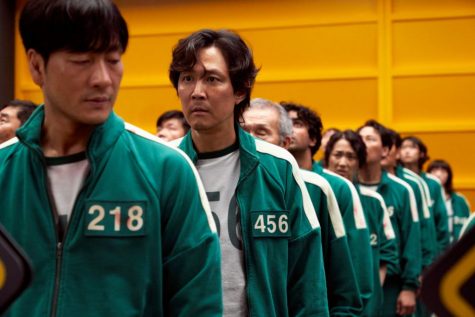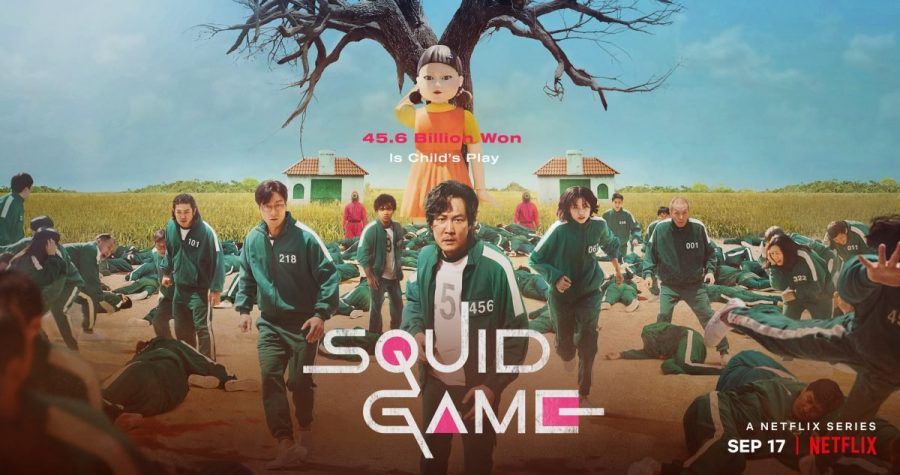Despite its popularity, Squid Game falls short
The Korean show on Netflix has all the elements of great filmmaking, except the most important one.
Netflix original TV show “Squid Games” has topped charts for weeks. But is it really as good as the numbers say it is?
October 25, 2021
Since its premiere on September 17th, Squid Games has reached number one in 91 of the countries Netflix is available in. Now, it is Netflix’s most-watched original TV show with over 111 million views in the first four weeks. Squid Games has taken the world by storm, though it is a bit difficult to understand why.
The story centers around a group of characters, various in their backgrounds and personalities, but united by their desperate need for money. These characters willingly participate in a series of survival games, competing for a grand prize of more than $38 million. Each new round of competition is a game from the players’ childhoods, such as Red Light Green Light or tug of war, and elimination from the competition means death.

All the marks of good storytelling are there. The cinematography is masterful, drawing the audience’s eyes to specific focus points and dousing the whole show with foreboding. The actors are phenomenal in their roles as well, launching little-known names into the spotlight. For example, rookie actress Jung HoYeon (who plays North Korean defector Kang book in the show) had 400,000 followers on Instagram before the release of Squid Games, but now the popularity of the show has increased her following to over 20.3 million people.
Even the production design is striking, and more importantly, purposeful. The maze of stairs inside the Squid Games building is colored in bright pinks, greens, and yellows, and the walls of the players’ dormitory are covered in childish shapes. One of the competition grounds for the death games is a playground and another is reminiscent of an old Korean schoolyard. The cheerful, innocent background stands in stark contrast to the blood and gore that fills the screen in front of them.

However, the essence of the show, the plot, remains unimpressive and predictable. Going in, you can immediately anticipate who survives the longest based on the screen time each character receives. You are even able to guess how each player meets their end based on the conflict between the characters. The simplicity of the actual games lends itself to little opportunity for the audience to engage their minds, leaving viewers room to fully soak in the violence.
There is a grander message that underlies the entirety of the show. The graphic portrayals of the characters’ dreary lives outside of the games and their desperate need for money as a means of salvation are obvious criticisms of the sharp divisions that exist between the haves and the have-nots in a capitalist society. Although powerful, this message is not uncommon among allegorical books, films, and TV shows.
More than anything, the takeaway from Squid Games is that it’s a show that makes you feel worse the more you watch it. In each episode, the deaths pile up and the inhumanity of the characters intensifies. By the end, you have seen so much blood and betrayal and greed that the smallest act of kindness comforts like no other.
Perhaps that is intentional as well: only show the audience the negatives of human behavior so that one moment of compassion shines bright. However, even that is not enough to justify the gruesome scenes that overwhelm much of the show beforehand.
Squid Games is a good show, but its only distinctive feature is the vast amount of blood spilled on screen. All the elements of good filmmaking are here, except perhaps the most important part — the story itself — which suggests, unfortunately, that the show’s popularity continues to soar owes more to its gratuitous violence than anything else.













Shejuti Wahed • Nov 3, 2021 at 1:27 pm
yes!!!